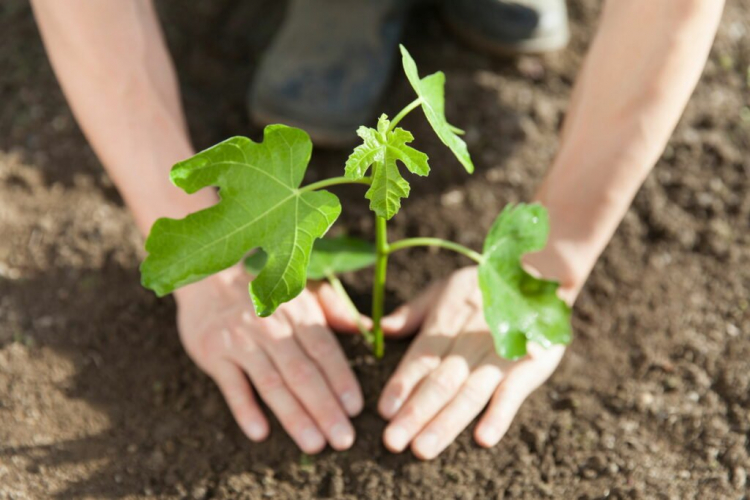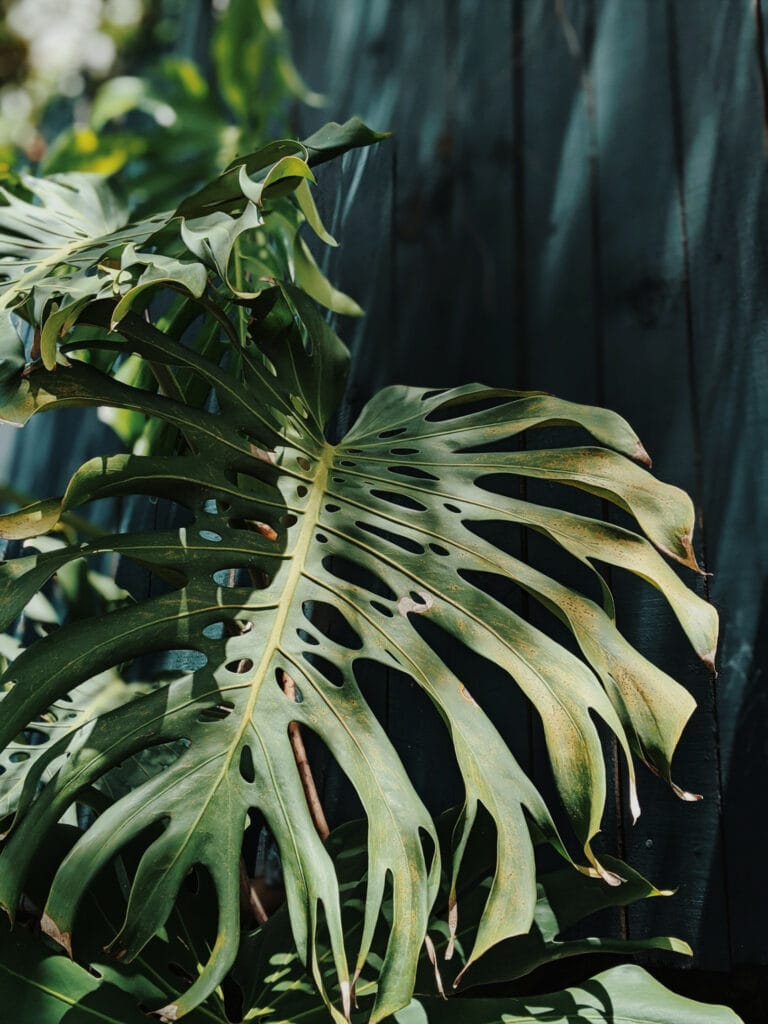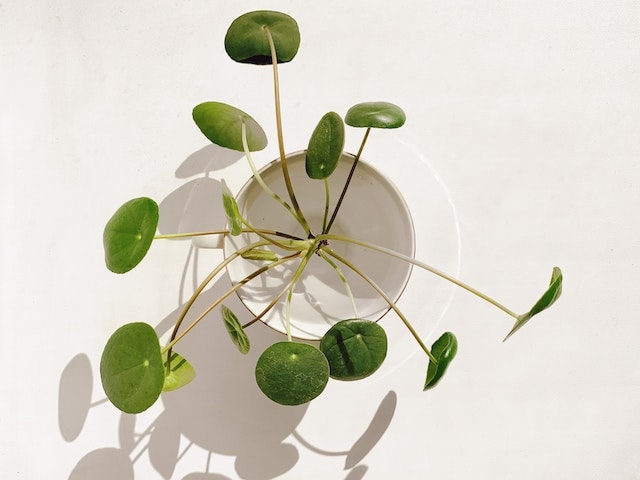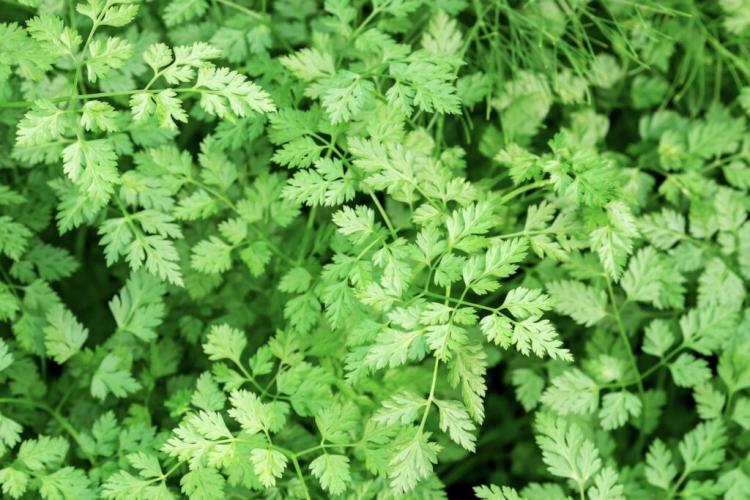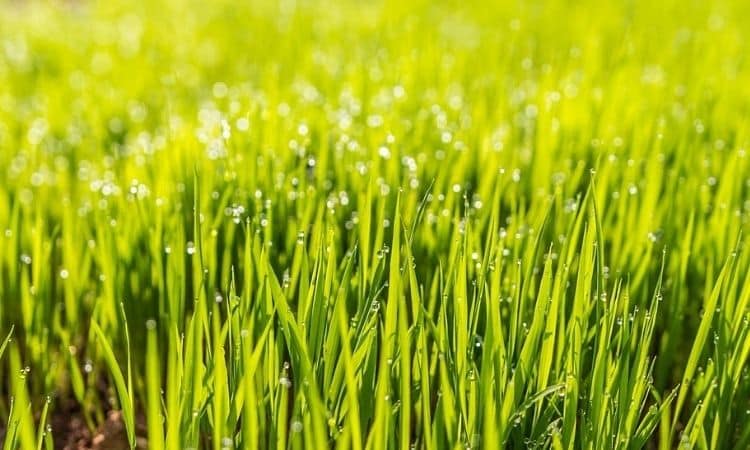When And How Fertilizing Cherry Trees?
In order for the cherry harvest to be abundant in summer, the tree needs enough nutrients. We show what you have to consider when fertilizing cherry trees.
There is nothing more beautiful than a cherry tree ( Prunus ) that is hung all over with red fruits. But in order for it to come to that, the cherry has to do a lot. Because the fruit tree must absorb sufficient nutrients from the soil both for its growth and for the formation of the fruits. The sweet cherry ( Prunus avium ) and also the sour cherry ( Prunus cerasus ) therefore thrive best on nutrient-rich, well-drained soils. In the long term, however, the natural nutrient reserves at the site are in most cases insufficient to guarantee consistently high yields and the best fruit quality. In this article, we will therefore tell you how you can optimally support your cherry tree in its development with needs-based fertilization.
Depending on the stage of development, your cherry tree has different demands on its nutrient supply. We explain to you when and with what best to fertilize your cherry tree.
The Right Time To Fertilize The Cherry Tree
Table of Contents
So that your cherry tree can grow well, you should ensure optimal starting conditions right from the start. Well-drained, nutrient-rich soil is ideal for cherry trees. When planting in autumn (October / November), it is, therefore, best to also pour a good layer of fresh potting soil into the hole and mix it well with a layer of compost. The organic material has time to decompose over the winter. In this way, the tree has enough nutrients available for new growth in early spring.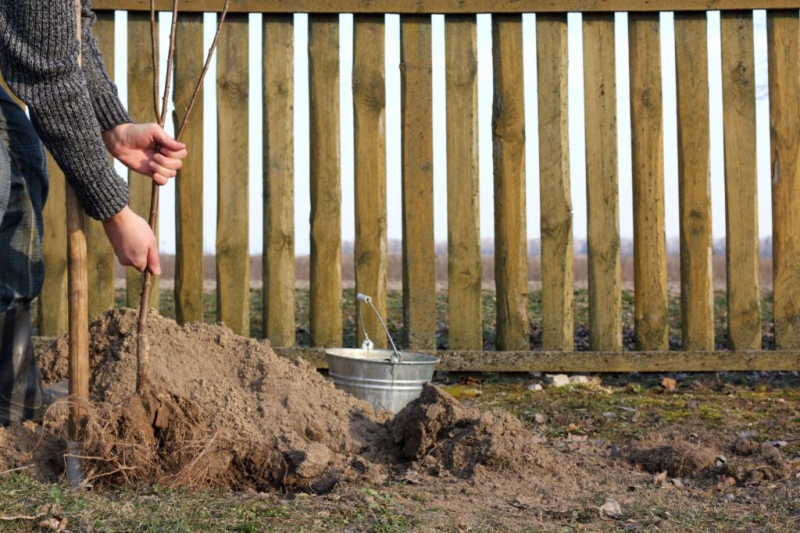
After planting, you should provide your cherry tree with sufficient nutrients through annual fertilization in spring (March / April). It is best to use a fertilizer with organic long-term effects in organic quality such as organic tomato fertilizer. This is particularly gentle on the plants and animals in the garden and optimally supplies your cherry tree with all the important nutrients. In fruit trees, fertilizer is usually applied to the tree disc – this is the name given to the circular area around the trunk because this is where the roots of the cherry tree are located, through which the tree is supplied with nutrients. Alternatively, you can fertilize the cherry tree with a portion of the compost.
You might so like: Lawn Fertilizer For Dog Owners: What To Look For?
Smaller forms of fruit trees with weak roots can be fertilized again in June to encourage the development of flower buds. After the last compost application in autumn, it is advisable to cover the tree slice with a layer of mulch made of leaves. To do this, simply turn the fallen leaves towards the trunk. This protects the soil from drying out and provides the cherry tree with additional nutrients.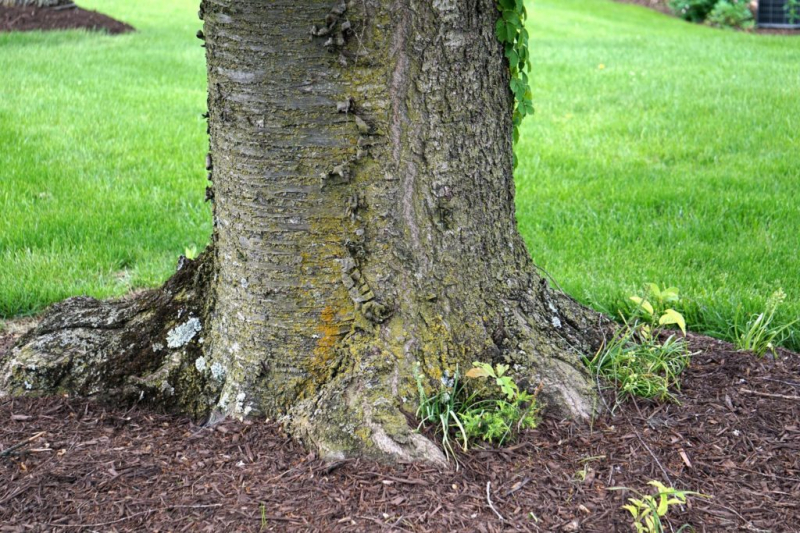
A layer of mulch not only serves as fertilizer but also protects the cherry tree from drying out
Fertilize the cherry tree in the pot
If you don’t have your own garden, you can also put a small cherry tree on the balcony or terrace. Column cherries are trained in their growth form through targeted pruning in such a way that they can cope with little space. Many varieties are therefore also well suited for keeping in pots. However, the cherry tree has only limited space and nutrients available in the pot, which is why you should fertilize it regularly but also water it. Due to the increased risk of frost, you should fertilize cherry trees in the pot only after they have sprouted, but no later than August, so that the new shoots can still mature before frost. We can also recommend organic tomato fertilizer with organic long-term effects for fertilization in pots.
When is the cherry tree fertilized?
- Work in fresh soil and compost when planting
- Basic fertilization in spring (March / April) with organic slow-release fertilizer
- Second fertilization to promote the set of flower buds (beginning of June)
- Apply the last compost in autumn and apply a layer of mulch from leaves
- Make sure there is sufficient fertilization in the pot culture
The optimal fertilizer for the cherry tree
Various fertilizers are available to supply your cherry tree with nutrients. In addition to natural fertilizers from your own garden, there is also a selection of fertilizers from specialist shops. In the following, we will present the arguments for and against the individual fertilization methods.
Fertilize cherry trees mainly organically: Instructions for the procedure
Ripe compost and rotted manure (for example horse manure) can be used wonderfully as fertilizer for your fruit tree. It is best to distribute the compost on the tree disc in autumn and work it lightly into the soil. It is easily decomposed over the winter and the nutrients are available for the tree to sprout early in spring.
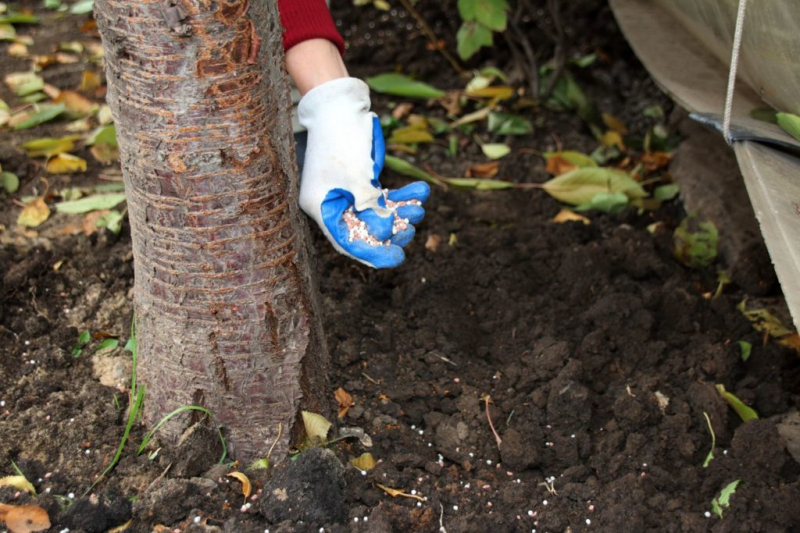
Both from a sustainable and a scientific point of view, there are many advantages to using organic fertilizers with long-term organic effects.
What are the advantages of organic fertilizer with an organic long-term effect?
- There is hardly any risk of over-fertilization because the slow decomposition via microorganisms means that the nutrients are released in a “dosed” manner
- Organic materials promote active, healthy soil life
- Particularly gentle on plants, people, and animals due to the lack of chemicals
Our organic tomato fertilizer is predominantly made from organic, vegetable residues from the food, feed, and luxury food industries. The high proportion of potassium and phosphorus not only benefits tomatoes but also has a positive effect on the blossoming and fruiting of your cherry tree. Sufficient nitrogen also promotes growth and leaf formation. After application, microorganisms in the soil break down the fertilizer into its components and gradually release the nutrients to the cherry tree. So that you supply your cherry tree with the right amount of nutrients, we have prepared detailed fertilization instructions for you below.
Long-term organic fertilization: Instructions & dosage quantities for cherry trees
- Before planting: Work 30 – 60 g per tree (2 to 5 heaping tablespoons) of organic tomato fertilizer into the topsoil layers
- Water the freshly planted cherry tree well so that the granules can loosen
- Every spring (March / April), depending on the size of the tree, fertilize about 50 – 150 g per tree (4 to 12 heaped tablespoons) in the area of the tree grate
- The second fertilization in June supports your cherry tree again optimally
Fertilize the cherry tree with minerals
In addition to organic fertilizers, a large number of mineral fertilizers are also available from specialist retailers. The nutrients contained in blue grain, liquid fertilizers & Co. are in pure form and can thus be absorbed directly by the plant from the soil solution. However, due to the simple solubility of the nutrients, there is also an increased risk of over-fertilization. If used improperly, the high salt concentrations can damage the sensitive roots. In addition, artificial fertilizers can more easily be washed out into deeper soil layers and lead to contamination of the groundwater there. In contrast to mineral fertilizers, primarily organic fertilizers are much more environmentally friendly and, if used correctly (see instructions above), support the development of your cherry tree in a more sustainable manner.
Fertilize the cherry tree with home remedies
For additional fertilization and to strengthen the immune system, you can water your cherry tree every two to three weeks during the growing season with your own plant manure. Nettle manure, for example, contains plenty of nitrogen, potassium, and trace elements that are essential for cherry trees. To make plant manure, first, chop up the leaves of the desired plant, place them in a bucket and fill it up with rainwater. Daily stirring accelerates the fermentation process and after two to three weeks the homemade plant fertilizer is ready. Before you water your cherry tree with it, however, you should dilute the liquid manure in a ratio of 1:10 with water so that the plant does not get burned.
Another tried and tested method of fertilizing fruit trees is mulching. To do this, distribute grass clippings or leaves on the tree grate. Due to the constant decomposition of the organic material, your cherry tree is supplied with additional nutrients. In addition, the mulch layer helps to keep the canopy free of weeds and thus to avoid nutrient competition between herbs and the shallow-rooted fruit tree. In hot summers, the soil is also protected from drying out by the protective layer.
Need-based fertilization begins with the planting of cherry trees. And how you should prune your cherry tree in order to achieve an optimal harvest, you can find out in our special article.
We have prepared our comprehensive overview article on the subject of “Fertilizing fruit trees” for you here.

